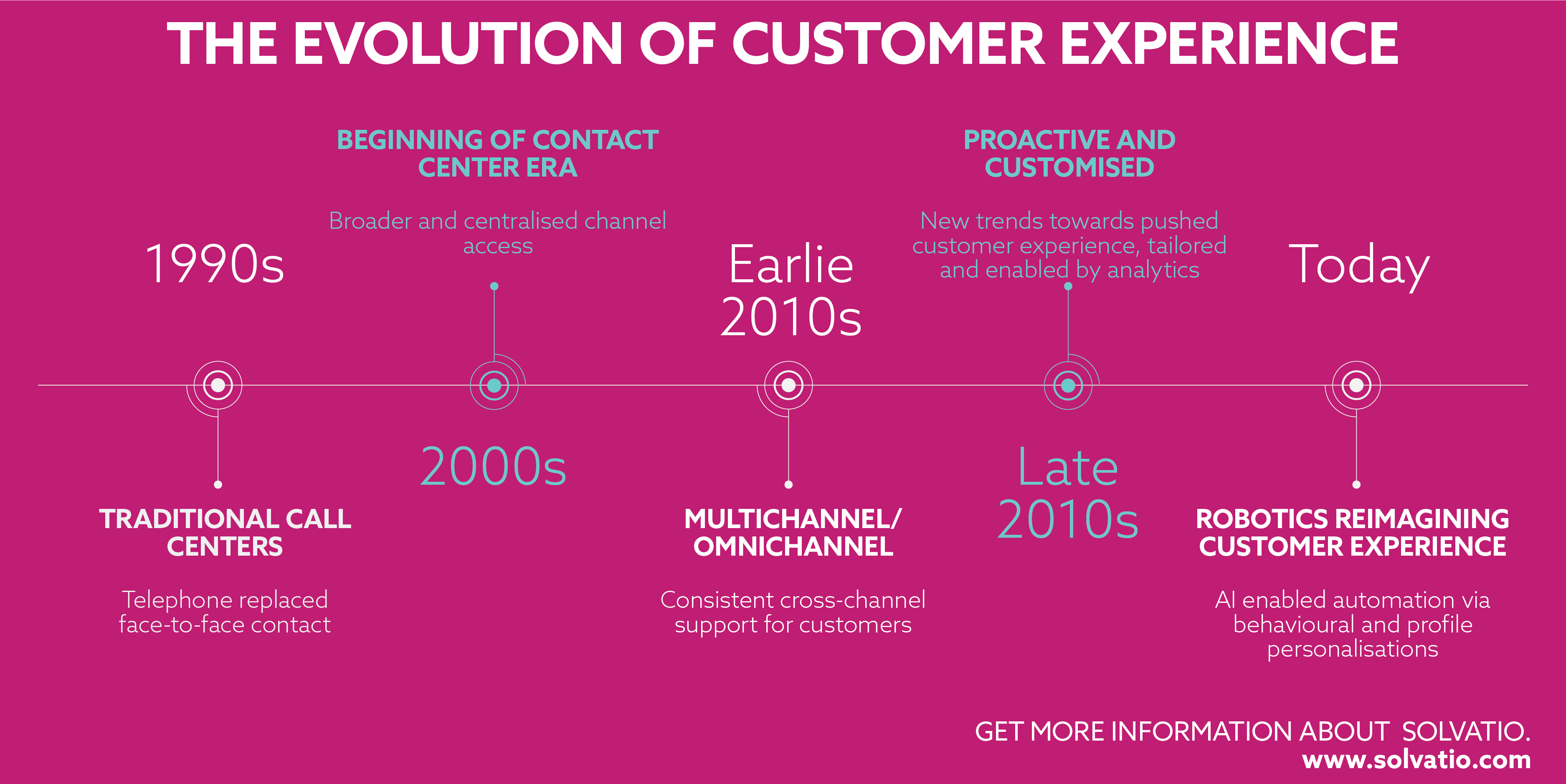
From personal contact to bots, artificial intelligence and machine learning: Customer service as we know it has been changing rapidly over the last 30 years – and the new trends for the future are not a long time coming.
What everybody is looking for in customer service is fast reaction, helpful answers, and happy clients at all times, since high customer satisfaction is a guarantor of economic success. For this reason, customer experience has increasingly centered on the customer over the years.
Call centers replace face-to-face contact
In the 1990s, customer experience started to turn into the type of customer service that is the standard today. Before, customer service was mainly provided by personal contact on site. In order to cope with the growing number of inquiries, for example about problems with the telephone connection, the personal contact was replaced by call centers. The customer would call and talk to customer service agents.
The extended call center
Ten years later, an era started which is still a major feature of customer service today: Contact centers replaced the classical call centers; now, communication was no longer restricted to the telephone. In keeping with new technologies, customers could use an increasing number of additional means of communication, such as fax, email, or chats. This increased customer satisfaction since everybody could use the communication method they preferred.
Multi- or omni-channel?
For this reason, multi- or omni-channel customer service has been in operation since about 2010: Customers can contact the support via different channels without having to explain their problem anew every time, which makes getting help particularly fast and easy. Though the terms ‘multi-channel’ and ‘omni-channel’ are often used synonymously, there are a few differences.
‘Multi-channel’ service addresses the customer via several channels and inquiries can for example be by telephone, chat, or self-service. However, each of these contacts is handled separately. If customers have a problem with their WLAN, say, they will first try to solve it by self-service. If this does not remedy the issue, they can contact a customer service agent via telephone or chat. But this agent has no information about the history. Customers are annoyed that they have to supply their data and problem history once more, all the more so if more than one contact is required and they have to tell everything all over each time.
To avoid this unsatisfactory situation, more and more contact centers offer omni-channel customer service, which is a further development of multi-channel service. In multi-channel, several channels are linked. In omni-channel, this function is enhanced: The channels are linked, and the customer can use all of them in parallel. Mobile devices in particular have driven this trend and user demand.
New customer service era
The latest development may well initiate a new era of customer experience: artificial intelligence. AI as well as machine learning and bots can relieve the agents’ workload so that customers get support faster. Thanks to the automation by AI and ML, support can be provided quicker and more efficient, customer satisfaction can be increased, and solutions can be suggested which have already proved successful in similar cases.
Even though these developments are still in the early stages, there are some companies which already use AI, ML and bots to support their customer service, making the agents’ work easier and increasing the satisfaction of their customers.


